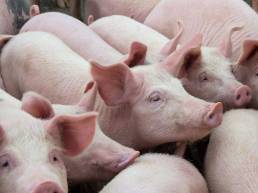New research in Germany shows that by using RPC copper the copper content in piglet feeds can be reduced.
RPCs are microencapsulated trace elements and have been especially developed to boost the absorption capacity in the animal, in response to new European legislation.
In this study the growth and feed intake in over 1500 piglets (Danbred x Piétrain) were assessed. The piglets were weaned at an average age of 26 days and were divided into two groups. Group 1 was fed conventional copper and group 2 was fed RPC copper. After 50 days the weight was redetermined and it may be concluded there was no significant difference between the technical results of both groups.
In this study the control group was also fed below the maximum legal standards (150 mgs/kg until 4 weeks after weaning and 100 mgs/kg until 8 weeks after weaning, EU regulation 2018/1039). The copper content reduction in this study was 45% in the first feed phase and 38% in the second. From the almost equal growth and feed intake it may be concluded that with RPC copper the copper contents in piglet feed can be reduced by 55% and 50% in comparison with the legal standard.
| Cu phase 1 | Cu phase 2 | Weight day 1 (kgs) | Weight day 49 (kgs) | Growth (g/d) | Feed intake (g/d) | Feed conversion | Rejection (%) | |
| C-Cu | 135 ppm | 80 ppm | 6.4 | 28.9 | 454 | 659 | 1.44 | 0.4 |
| RPC-Cu | 70 ppm | 50 ppm | 6.5 | 28.8 | 451 | 656 | 1.44 | 0.8 |
Table 1. Results RPC copper vs. conventional copper (sulfate)
You may also like
Reduction of heat stress in pigs and poultry
June 14, 2012
Every summer, sows have difficulty with the higher temperatures in the sty. Reduced feed uptake, less milk and reduced fertility are common consequences of heat stress. In addition to sows, broilers can also suffer from…




